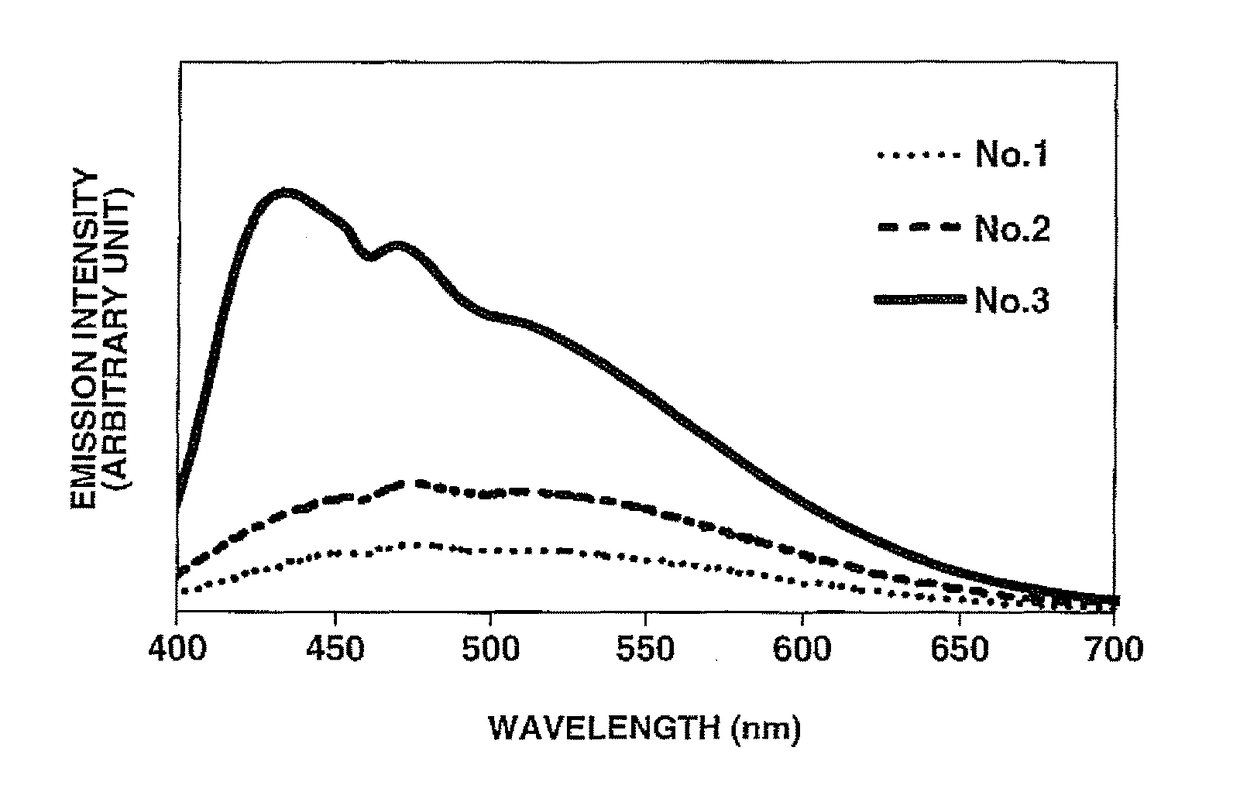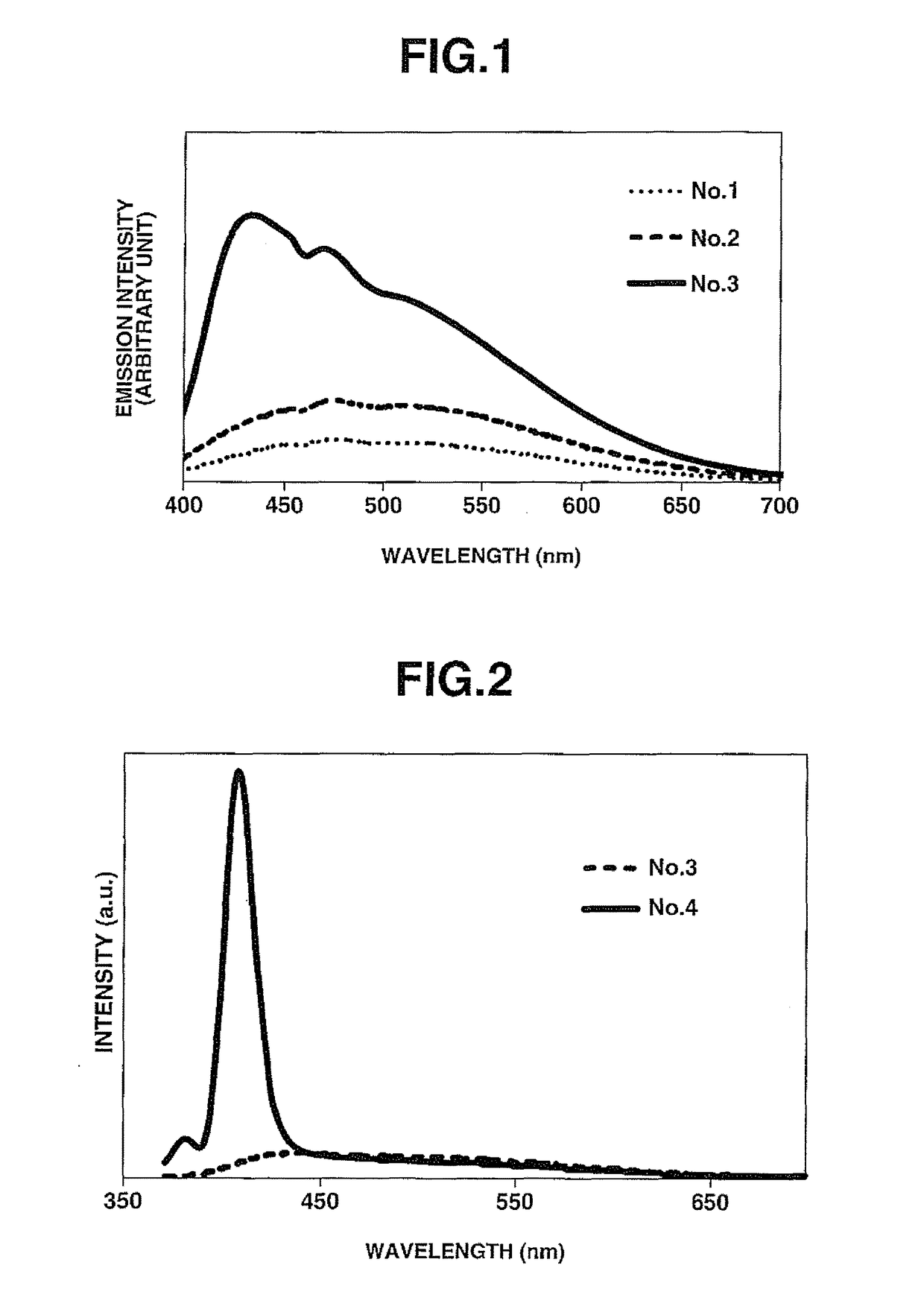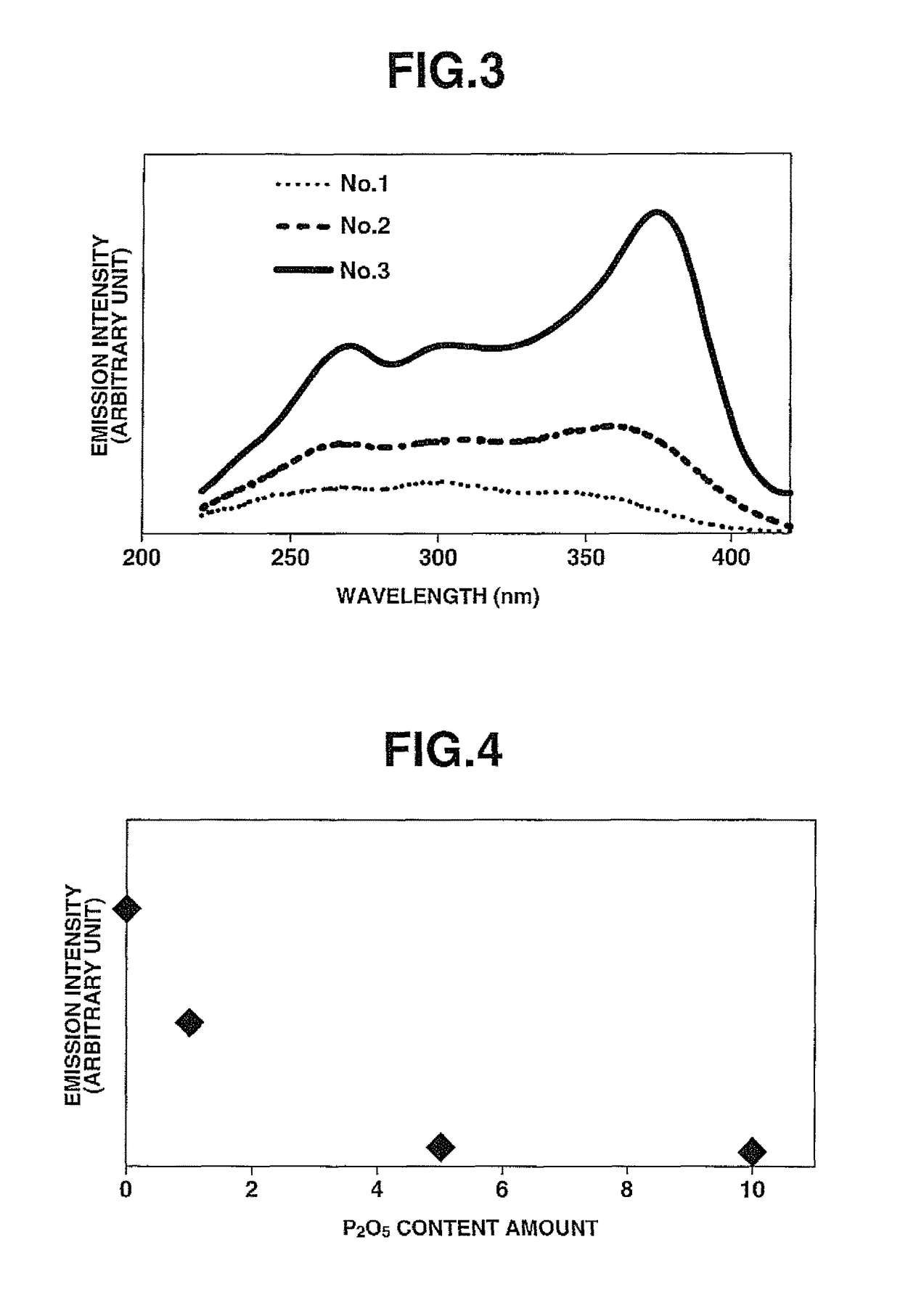Broadband emission material and white light emission material
a technology of emission material and white light, applied in the direction of active medium material, sustainable building, instruments, etc., can solve the problems of insufficient cyan component light (up to 500 nm) and red component light (600 nm or more), and it is difficult for white light emitting devices to achieve high color rendering properties. , to achieve the effect of higher emission intensity
- Summary
- Abstract
- Description
- Claims
- Application Information
AI Technical Summary
Benefits of technology
Problems solved by technology
Method used
Image
Examples
example 1
[0068]Samples No. 2 to No. 8 were obtained in the same manner as in Comparative Example 1 except for preparing raw glass materials by using and mixing starting compounds at respective mol % as shown in TABLE 1. The sample No. 2 was set to the same Ba cation content as the sample No. 1 by replacing a part of BaF2 with BaCl2, whereas the samples No. 3 to No. 8 were substantially free of Ba. More specifically, the samples No. 4 and No. 5 were different in composition from the sample No. 3 in that the Ca cation content was decreased with increase in the Sr cation content. The sample No. 6 was different in that CaCl2 was used in place of BaF2. The samples No. 7 and 8 were different in composition from the sample No. 3 in that the content amount of YbF3 was increased.
[0069]
TABLE 1No.AlF3BaF2SrF2CaF2MgF2YF3BaCl21351010201014.82235510201014.82533510201014.8243510151014.8253520101014.8263510201014.8273510201014.5083510201014.2893520201014.82Internal quantum efficiency / No.SrCl2CaCl2YbF3Extern...
example 2
[0091]As mentioned above, the emission color of the sample No. 4 was purple white. A sintered body was produced as follows by adding a red phosphor to the sample No. 4 for color correction.
[0092]First, the sample No. 4 was pulverized to a powder with an average particle size of 10 μm in a nitrogen atmosphere. As the red phosphor, Eu2+:CaAlSiN3 (luminescent center wavelength: 630 nm, average particle size: 10 μm) was added in an amount of 2 wt % based on the total weight of the powder of the sample No. 4. The powder of the sample No. 4 was mixed well with the red phosphor. The resulting mixture was formed into a pellet with a diameter of 12 mm and a thickness of 0.5 mm. The pellet was sintered by heating at 430° C. for 1 minute in a nitrogen atmosphere. By this, the sintered body in which the red phosphor was mixed in the sample No. 4 was completed as a test sample.
[0093]An emission spectrum of the thus-obtained test sample was measured at an excitation wavelength of 365 nm. The meas...
example 3
[0094]A fiber was produced as follows. A core of the fiber was of AlF3-based fluoride glass into which 1500 wt ppm of divalent ytterbium ions (Yb2±) and 0.3 mass % of trivalent ytterbium ions (Yb3+) were added as rare-earth ions. A clad of the fiber was of AlF3-based fluoride glass.
[0095]The composition of the AlF3-based fluoride glass used is indicated below. In the composition, the numerals represent mol % of the respective fluorides. Further, the term “LnF” refers to the sum of the rare-earth trifluorides, including YbF3 and YF3, in the composition. The AlF3-based fluoride glass of the core was subjected to reduction to a predetermined reduction rate by flowing 112 into the atmospheric gas during the melting. (Core) ALF3: 35, LnF3: 15, MgF2: 10, CaF2: 17.5, SrF2: 13, SrCl2: 7, BaCl2: 2.5
[0096]The composition of the clad was controlled such that thus-obtained fiber had an NA of 0.15 and a cutoff wavelength of 780 nm. The fiber was 5 cm in length. The emission spectrum of this fibe...
PUM
| Property | Measurement | Unit |
|---|---|---|
| luminescent center wavelength | aaaaa | aaaaa |
| wavelength range | aaaaa | aaaaa |
| center wavelength | aaaaa | aaaaa |
Abstract
Description
Claims
Application Information
 Login to View More
Login to View More - R&D Engineer
- R&D Manager
- IP Professional
- Industry Leading Data Capabilities
- Powerful AI technology
- Patent DNA Extraction
Browse by: Latest US Patents, China's latest patents, Technical Efficacy Thesaurus, Application Domain, Technology Topic, Popular Technical Reports.
© 2024 PatSnap. All rights reserved.Legal|Privacy policy|Modern Slavery Act Transparency Statement|Sitemap|About US| Contact US: help@patsnap.com










